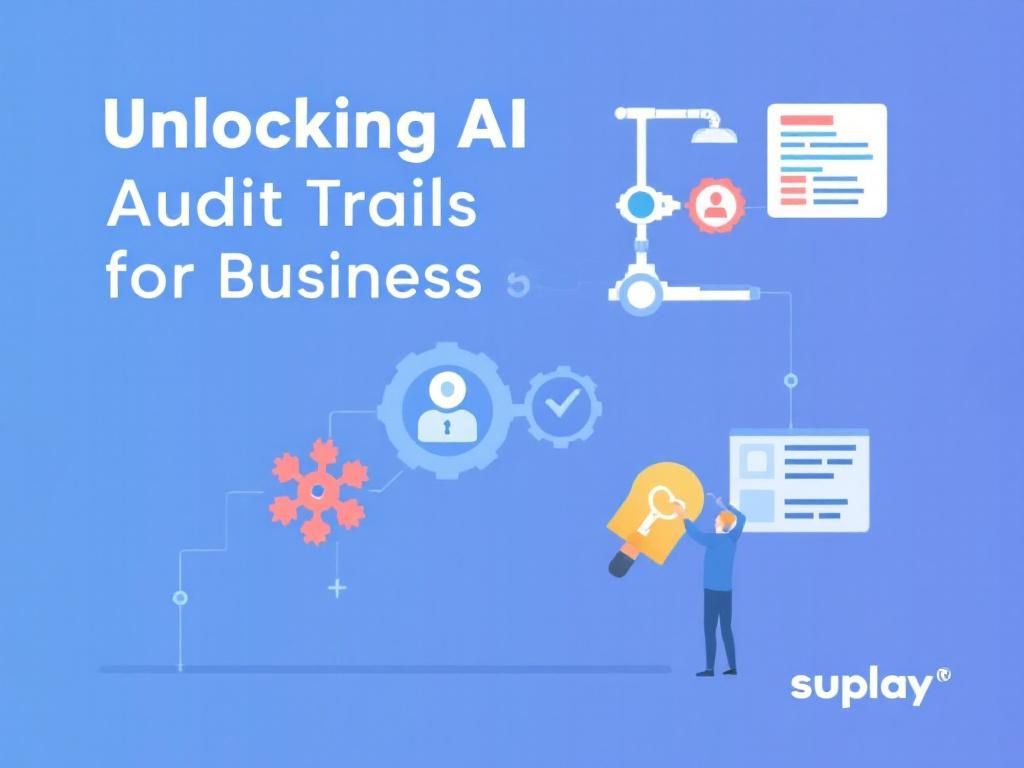In the rapidly evolving landscape of artificial intelligence, understanding and utilizing AI audit trails has become paramount for businesses aiming to maintain transparency, accountability, and compliance. These audit trails serve as a comprehensive record of AI decision-making processes, enabling organizations to gain insights, enhance trust, and ensure regulatory adherence. In this article, we will explore the significance of AI audit trails, how they can be effectively implemented, and the benefits they bring to enterprises striving for success in a data-driven world.
The Importance of AI Audit Trails
AI audit trails provide a detailed history of the actions and decisions made by AI systems. This is crucial for several reasons:
- Transparency: Stakeholders can understand how decisions were reached.
- Compliance: Helps in adhering to legal and regulatory requirements.
- Error Analysis: Facilitates the identification of issues and errors in AI behavior.
- Accountability: Ensures that organizations can be held accountable for AI decisions.
- Trust Building: Enhances trust among users and clients by providing insight into AI processes.
Key Components of AI Audit Trails
To effectively implement AI audit trails, one must consider several key components:
1. Data Collection
Audit trails must capture relevant data points, which may include:
- Input data to the AI system
- Model parameters and configurations
- Decision outputs
- Time stamps for every action
- User interactions and feedback
2. Data Integrity
Ensuring the integrity of the data collected is essential. This involves:
- Implementing robust security measures
- Regular audits of the data for accuracy
- Using cryptographic techniques to ensure tamper-proof records
3. Accessibility
Data should be easily accessible for review by stakeholders. Considerations include:
- User-friendly dashboards for visualizing audit trails
- APIs for integrating audit data with other systems
- Search and filtering capabilities for ease of access
Implementing AI Audit Trails: A Step-by-Step Guide
Creating effective AI audit trails requires a methodical approach. Here’s a step-by-step guide:
- Define Objectives: Identify what you want to achieve with the audit trails.
- Select Data Points: Determine which data points are critical for tracking.
- Establish Collection Methods: Choose how data will be collected and stored.
- Implement Security Measures: Ensure that data integrity and security protocols are in place.
- Design the User Interface: Build intuitive dashboards for data access and analysis.
- Test and Validate: Run tests to ensure the audit trail functions as expected.
- Train Stakeholders: Provide training to users on how to utilize the audit trail.
Real-World Applications of AI Audit Trails
AI audit trails can be utilized across various industries. Below are some notable applications:
| Industry | Application | Benefits |
|---|---|---|
| Finance | Fraud Detection | Helps in tracing fraudulent activities and ensuring compliance. |
| Healthcare | Patient Diagnostics | Ensures transparency in AI-driven treatment recommendations. |
| Retail | Personalized Marketing | Tracks customer preferences and behavior for targeted promotions. |
| Transportation | Autonomous Vehicles | Provides accountability for decision-making in self-driving cars. |
Challenges in Implementing AI Audit Trails
While the benefits of AI audit trails are significant, there are challenges in implementation:
- Data Volume: Managing and storing large volumes of data can be complex.
- Privacy Concerns: Ensuring personal data is handled according to legal regulations, such as GDPR.
- Cost: Initial setup and maintenance of audit trail systems can require significant investment.
The Future of AI Audit Trails
As AI technology continues to advance, the role of audit trails is expected to evolve as well:
- Integration with Emerging Technologies: AI audit trails will likely interact with blockchain, enhancing data security.
- Real-time Monitoring: Future systems may enable real-time tracking of AI decisions and actions.
- AI-Driven Insights: The use of AI analytics to interpret audit data will become more prevalent.
Conclusion
In conclusion, AI audit trails are not just a regulatory requirement but a strategic asset for businesses. By embracing transparency and accountability, organizations can harness the full potential of AI while fostering trust among stakeholders. As AI continues to permeate various sectors, understanding and implementing effective audit trails will be crucial for ensuring ethical and responsible AI use, ultimately paving the way for business success in a technology-driven future.
FAQ
What are AI audit trails?
AI audit trails are detailed records that document the decision-making processes and data usage of artificial intelligence systems, ensuring transparency and accountability.
How can AI audit trails benefit my business?
AI audit trails can enhance transparency, improve compliance with regulations, and provide insights into AI performance, ultimately leading to better business decisions and outcomes.
What industries can benefit from AI audit trails?
Industries such as finance, healthcare, and manufacturing can greatly benefit from AI audit trails by ensuring compliance, improving risk management, and enhancing operational efficiency.
How do I implement AI audit trails in my organization?
To implement AI audit trails, begin by defining your data governance framework, selecting appropriate tools, and ensuring all AI models are configured to log necessary data for auditing.
Are there any legal implications related to AI audit trails?
Yes, there are legal implications as businesses must comply with data protection laws, such as GDPR or CCPA, which necessitate maintaining accurate and accessible audit trails for AI systems.
What tools can help manage AI audit trails?
Tools such as data governance software, machine learning monitoring platforms, and specialized audit trail management solutions can help effectively manage and analyze AI audit trails.




